Christopher and Mark McCormack are based on the outskirts of Kilcullen, Co Kildare, farming both tillage and beef enterprises. For the 2018 harvest season, the brothers took advantage of the tillage TAMS and upgraded their grain dryer.
The old batch dryer was a PTO-driven mobile unit with a capacity of 25t. Although it was still in good working order, they decided to trade it in for a new unit capable of higher throughput.
The McCormack brothers opted for a new 44t mobile Pedrotti batch-drying system. The new dryer is larger and encompasses a higher level of automation than the previous one. Cross Grain Services is the main Irish importer of Italian-manufactured Pedrotti drying systems.
Pedrotti has been manufacturing grain drying equipment for the past 59 years, exporting to worldwide markets. Today, equipment is still being manufactured on the same site as it was from the beginning in 1950. The factory currently spans over an area of 20,000m2, with the firm capable of producing upwards of 250 dryers per year.
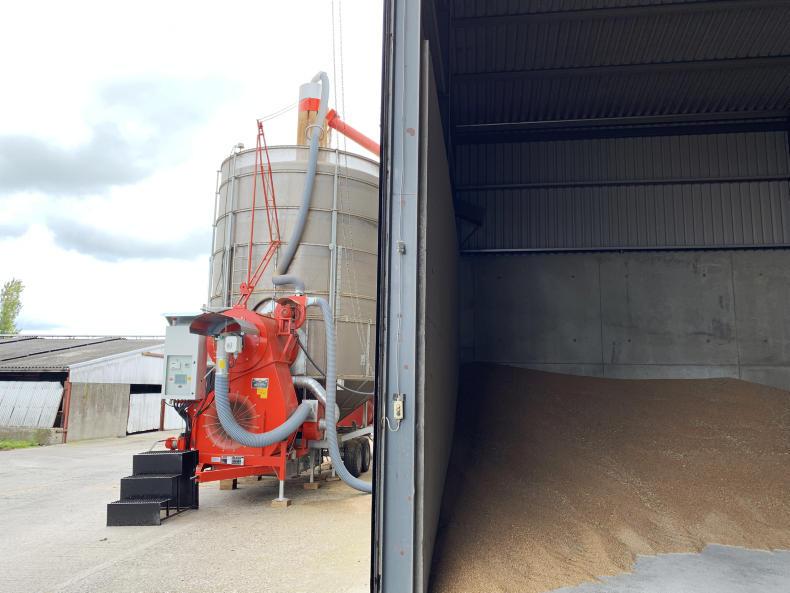
When drying is finished it unloads into the adjoining shed.
Dryer construction
The McCormacks decided to go with a galvanised unit to increase its service life as wet chaff and dust mixed with moisture over time can cause corrosion. The main bin has a capacity of 44t. Its lightweight galvanised frame has three telescopic upper sections that are easily erected using a hand-operated winch system.
The frame is sheeted with perforated stainless steel which allows air to flow through the dryer. An internal agitator system mixes grain to prevent overheating while ensuring an evenly dried sample. The complete unit is seated on a tandem axle with lights and a drawbar for transport purposes.
The dryer’s intake auger, central auger and discharge chute fold down for transport. According to Christopher, it takes on average two hours to erect the drier to working position. This includes setting up the intake hopper, grain cleaning system and each of the 16 legs that all have to be adjusted so that the dryer is level. Christopher noted that this setup process takes somewhat more time compared to his old dryer given its larger stature and increased number of legs to be adjusted. Throughout the dryers frame there are level indicators to make the setup process easier.
The old dryer on the farm was PTO-driven, meaning an extra tractor was always needed to run the dryer. The new system is electrically driven, running off a three-phase supply, powering six motors in total. The largest motor runs the large fan blowing hot air from the burner towards the grain.
This drive method removes the need for an extra tractor burning diesel as well as giving Christopher the ability to turn off individual functions independently which he couldn’t do previously. The dryer is fitted with an automatic greasing system which Christopher says is a great job, removing the need to manually grease auger bearings daily. Greasing intervals can be set from the control panel.
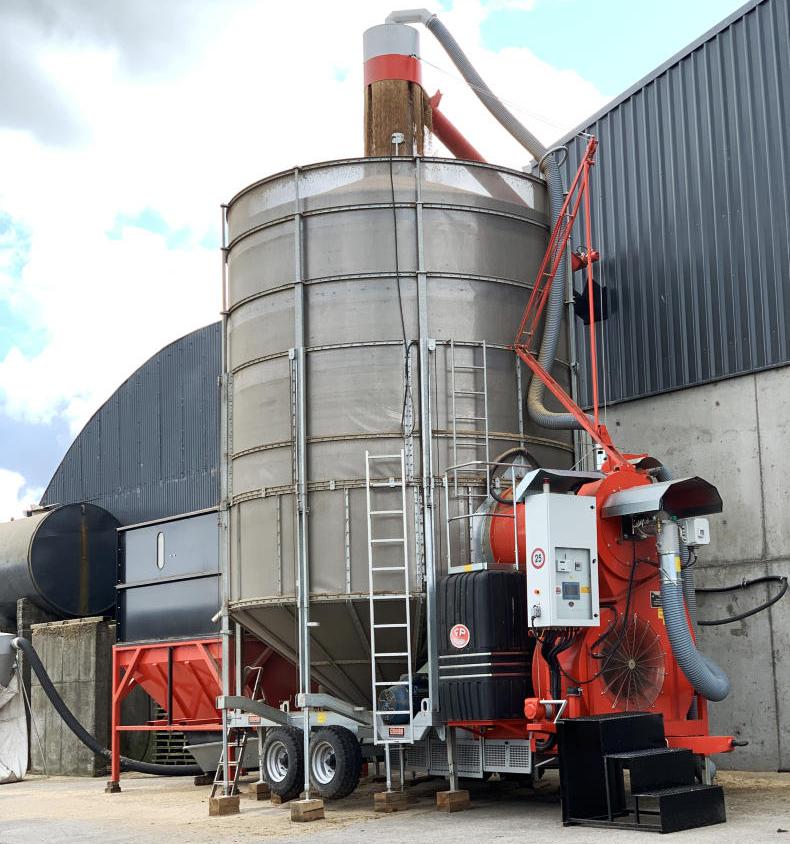
The 40t mobile dryer stands at almost 8.7m tall.
The 350mm-diameter central auger is Hardox-reinforced for a longer lifespan given its constant contact with grain throughout the process. The bottom drive of the central auger is fitted with a tapered bearing system, allowing it to withstand a larger load in comparison with standard bearing systems.
Burner
The dryer is fitted with a tri-flame diesel burner compared to the dual-flame burner before, meaning the new dryer can build up heat much quicker. All dryer functions including the burner are controlled using the Programmable Logical Controller (PLC), controlling desired fuel, temperature and the ability to close off one or two flames for less intense drying of crops such as oats.
Behind the control panel is the 650l fuel tank that supplies the burner with green diesel.
Automation
Once the dryer’s 10t intake hopper is filled with the loading shovel, the operator can input parameters based on requirements into the intuitive control terminal. Drying can be done in either manual or automatic modes. Automatic mode can intake grain, circulate it, switch on the burner and dry to the set moisture level and then cool it to a suitable temperature of 28°C before unloading.
Multiple sensors are fitted throughout the drier to provide feedback to the system, whereby in the event of an error the procedure can be stopped and alarmed to prevent damage to the process or the dryer.
Christopher explained how he usually operates the drier in manual mode as either Mark or himself are usually in the yard to operate it. The 6in touchscreen shows live readings of the dryer’s status, such as moistures, set parameters, etc.
Fitted inside the control panel is a GSM dialer that alerts the operator via call or text when drying phases are completed or if an error occurs during the drying process.
Conclusion
Since purchasing the new dryer, Christopher said that last season and this season has left drying much easier as grain is coming off the combine at much lower moisture than some years.
The McCormacks’ dryer has a capacity of 40t. Drying winter barley, for example, at 18%, which was typical so far this season, the system takes on average 20 minutes to load, 40 minutes to dry, 40 minutes to circulate and cool and a further 20 minutes to unload.
This will allow running five batches during the day, Christopher noted. This equates to a total of 200t dried for a 10-hour day. Christopher explained that although it takes a batch longer to dry, he is drying almost half the quantity of what he was with the old system at a time.
Presets on the touchscreen control panel make choosing between crop types easy. The discharge chute has the ability to move position and unload into either a trailer or into an adjoining shed.
Christopher explained how he can alter the dust extractor ferocity to remove as much dust and clean the sample, which in turn increases grain bushel weight. Bushel weight can only be increased using a batch drying system.
Likes
Electric drive.Ease of use.Increased throughput.Dislikes
Long setup time.Cleaning system is flimsy.Dryer specification
Model: XLMJ 400 Extra.Drying Capacity: 44t per batch.Drying Cycle: 120 minutes.Burner type: Twin stage diesel.Unladen weight: 7,600kg.Working Height x length: 8.7m x 9.6m.Transport height x length: 5.4m x 8.8m.Control: automatic/ manual operation via touchscreen.Price: €122,000 plus VAT.
Christopher and Mark McCormack are based on the outskirts of Kilcullen, Co Kildare, farming both tillage and beef enterprises. For the 2018 harvest season, the brothers took advantage of the tillage TAMS and upgraded their grain dryer.
The old batch dryer was a PTO-driven mobile unit with a capacity of 25t. Although it was still in good working order, they decided to trade it in for a new unit capable of higher throughput.
The McCormack brothers opted for a new 44t mobile Pedrotti batch-drying system. The new dryer is larger and encompasses a higher level of automation than the previous one. Cross Grain Services is the main Irish importer of Italian-manufactured Pedrotti drying systems.
Pedrotti has been manufacturing grain drying equipment for the past 59 years, exporting to worldwide markets. Today, equipment is still being manufactured on the same site as it was from the beginning in 1950. The factory currently spans over an area of 20,000m2, with the firm capable of producing upwards of 250 dryers per year.

When drying is finished it unloads into the adjoining shed.
Dryer construction
The McCormacks decided to go with a galvanised unit to increase its service life as wet chaff and dust mixed with moisture over time can cause corrosion. The main bin has a capacity of 44t. Its lightweight galvanised frame has three telescopic upper sections that are easily erected using a hand-operated winch system.
The frame is sheeted with perforated stainless steel which allows air to flow through the dryer. An internal agitator system mixes grain to prevent overheating while ensuring an evenly dried sample. The complete unit is seated on a tandem axle with lights and a drawbar for transport purposes.
The dryer’s intake auger, central auger and discharge chute fold down for transport. According to Christopher, it takes on average two hours to erect the drier to working position. This includes setting up the intake hopper, grain cleaning system and each of the 16 legs that all have to be adjusted so that the dryer is level. Christopher noted that this setup process takes somewhat more time compared to his old dryer given its larger stature and increased number of legs to be adjusted. Throughout the dryers frame there are level indicators to make the setup process easier.
The old dryer on the farm was PTO-driven, meaning an extra tractor was always needed to run the dryer. The new system is electrically driven, running off a three-phase supply, powering six motors in total. The largest motor runs the large fan blowing hot air from the burner towards the grain.
This drive method removes the need for an extra tractor burning diesel as well as giving Christopher the ability to turn off individual functions independently which he couldn’t do previously. The dryer is fitted with an automatic greasing system which Christopher says is a great job, removing the need to manually grease auger bearings daily. Greasing intervals can be set from the control panel.

The 40t mobile dryer stands at almost 8.7m tall.
The 350mm-diameter central auger is Hardox-reinforced for a longer lifespan given its constant contact with grain throughout the process. The bottom drive of the central auger is fitted with a tapered bearing system, allowing it to withstand a larger load in comparison with standard bearing systems.
Burner
The dryer is fitted with a tri-flame diesel burner compared to the dual-flame burner before, meaning the new dryer can build up heat much quicker. All dryer functions including the burner are controlled using the Programmable Logical Controller (PLC), controlling desired fuel, temperature and the ability to close off one or two flames for less intense drying of crops such as oats.
Behind the control panel is the 650l fuel tank that supplies the burner with green diesel.
Automation
Once the dryer’s 10t intake hopper is filled with the loading shovel, the operator can input parameters based on requirements into the intuitive control terminal. Drying can be done in either manual or automatic modes. Automatic mode can intake grain, circulate it, switch on the burner and dry to the set moisture level and then cool it to a suitable temperature of 28°C before unloading.
Multiple sensors are fitted throughout the drier to provide feedback to the system, whereby in the event of an error the procedure can be stopped and alarmed to prevent damage to the process or the dryer.
Christopher explained how he usually operates the drier in manual mode as either Mark or himself are usually in the yard to operate it. The 6in touchscreen shows live readings of the dryer’s status, such as moistures, set parameters, etc.
Fitted inside the control panel is a GSM dialer that alerts the operator via call or text when drying phases are completed or if an error occurs during the drying process.
Conclusion
Since purchasing the new dryer, Christopher said that last season and this season has left drying much easier as grain is coming off the combine at much lower moisture than some years.
The McCormacks’ dryer has a capacity of 40t. Drying winter barley, for example, at 18%, which was typical so far this season, the system takes on average 20 minutes to load, 40 minutes to dry, 40 minutes to circulate and cool and a further 20 minutes to unload.
This will allow running five batches during the day, Christopher noted. This equates to a total of 200t dried for a 10-hour day. Christopher explained that although it takes a batch longer to dry, he is drying almost half the quantity of what he was with the old system at a time.
Presets on the touchscreen control panel make choosing between crop types easy. The discharge chute has the ability to move position and unload into either a trailer or into an adjoining shed.
Christopher explained how he can alter the dust extractor ferocity to remove as much dust and clean the sample, which in turn increases grain bushel weight. Bushel weight can only be increased using a batch drying system.
Likes
Electric drive.Ease of use.Increased throughput.Dislikes
Long setup time.Cleaning system is flimsy.Dryer specification
Model: XLMJ 400 Extra.Drying Capacity: 44t per batch.Drying Cycle: 120 minutes.Burner type: Twin stage diesel.Unladen weight: 7,600kg.Working Height x length: 8.7m x 9.6m.Transport height x length: 5.4m x 8.8m.Control: automatic/ manual operation via touchscreen.Price: €122,000 plus VAT. 





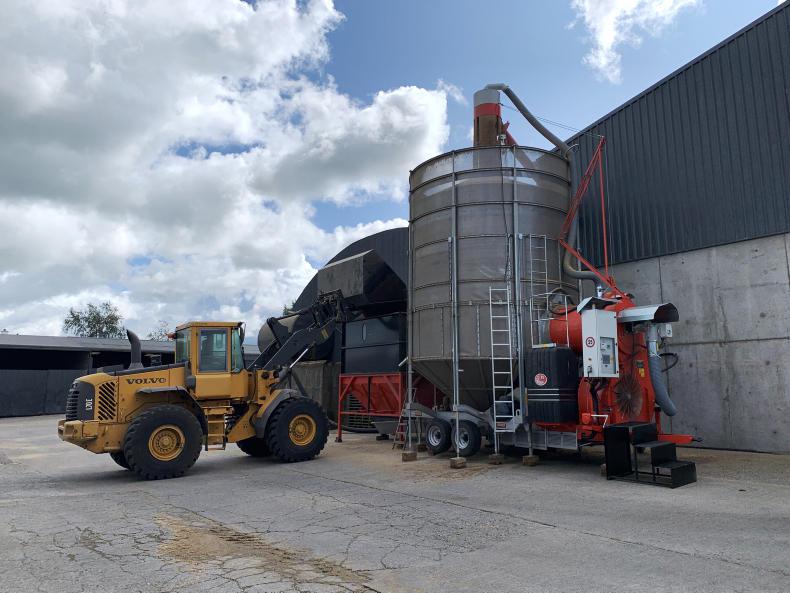
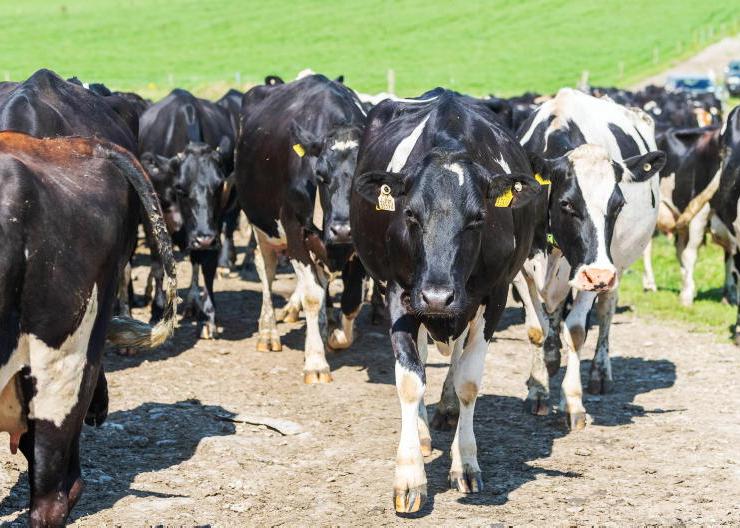

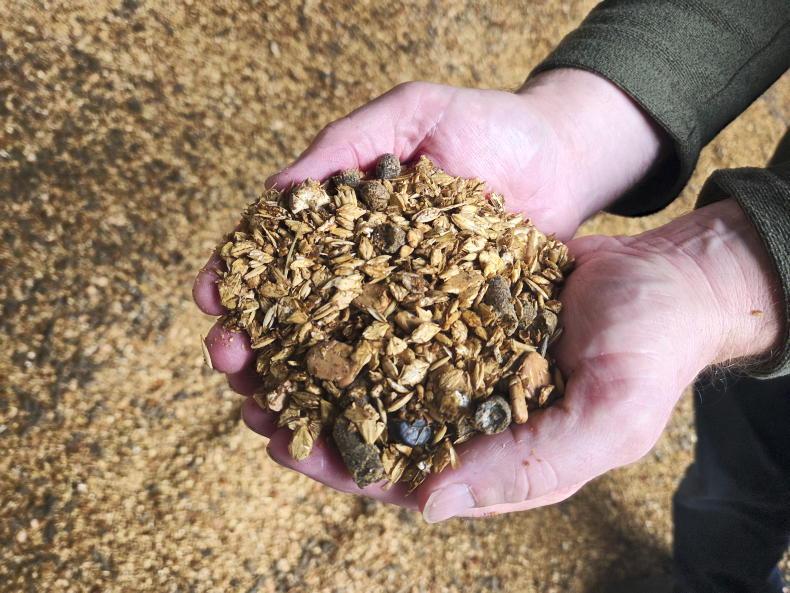
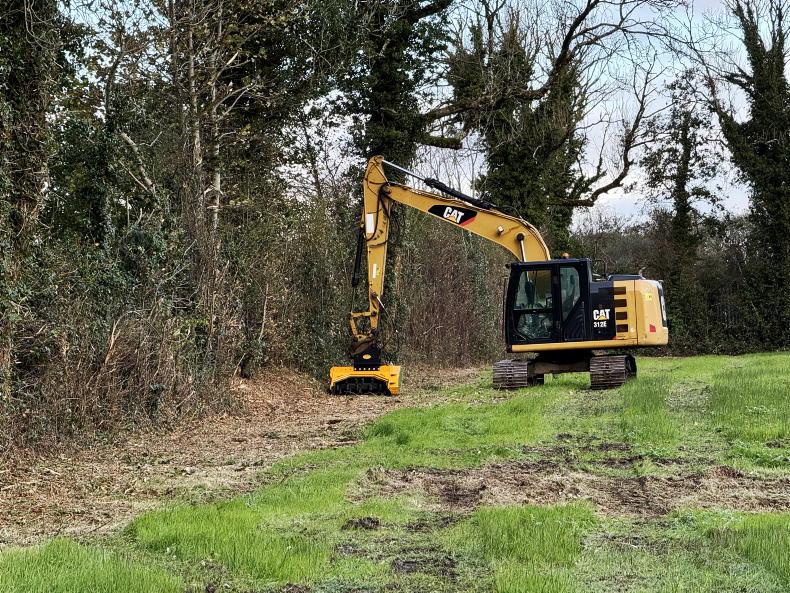
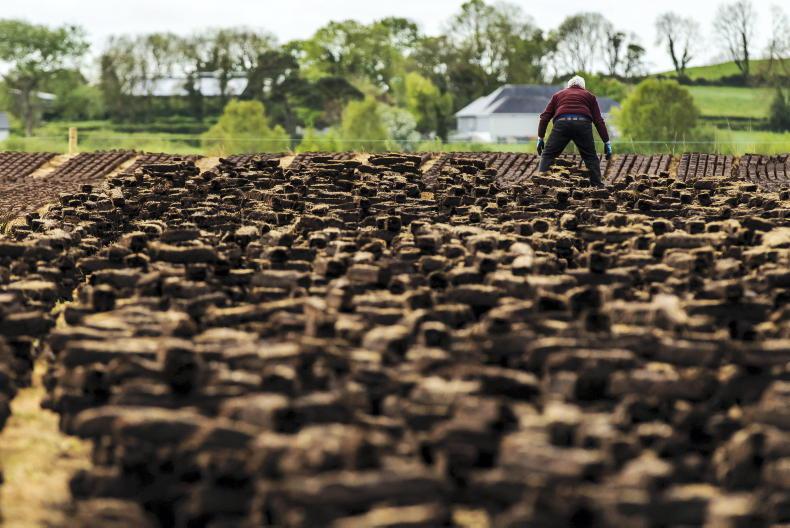
SHARING OPTIONS